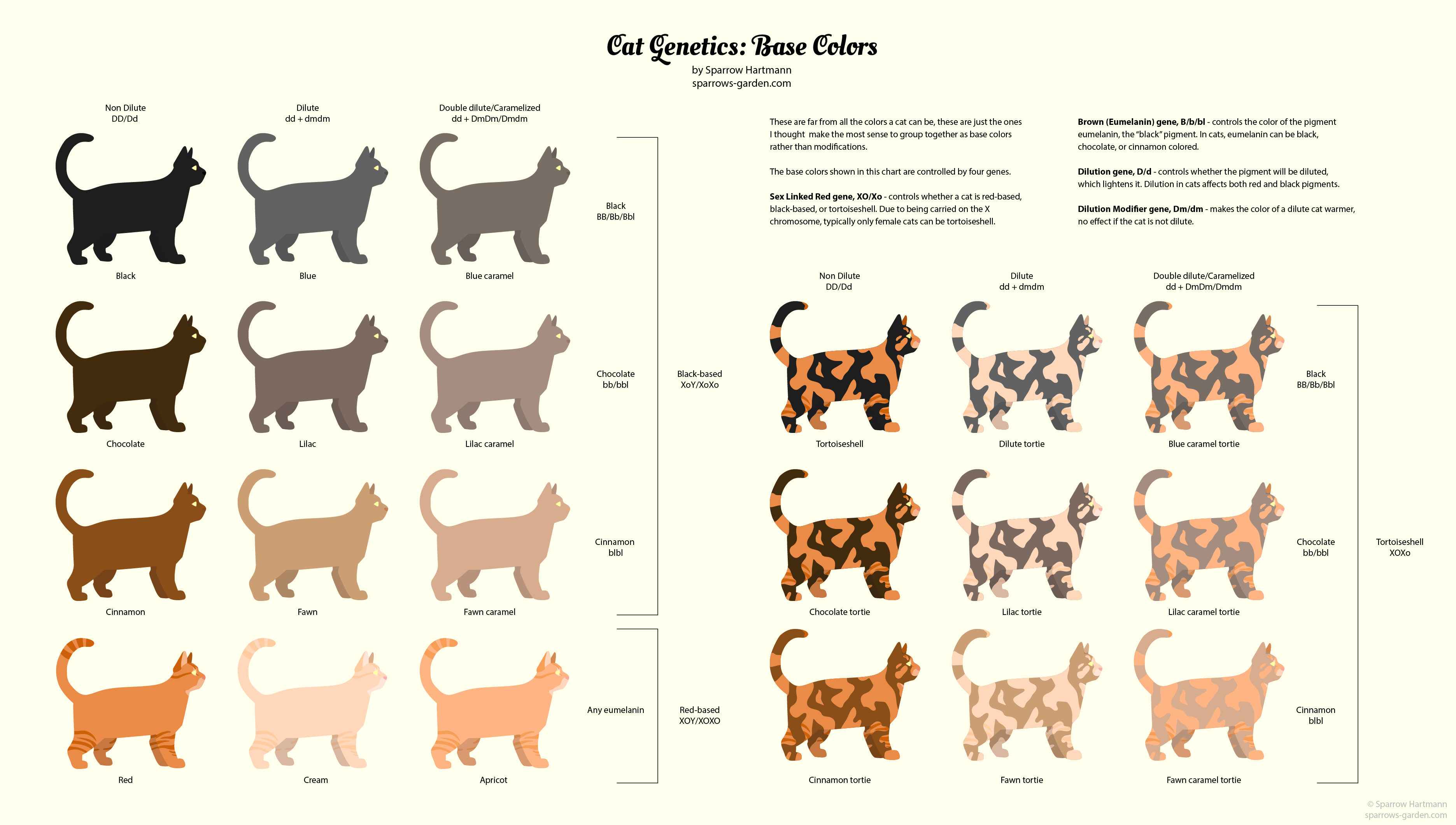| HOME | PORTFOLIO | GENETICS | ABOUT |

The D locus is responsible for dilution. Dilution is a recessive trait that lightens the color of a cat. In cats, it affects both eumelanin and phaeomelanin fairly equally.
The two alleles are D (full color), and d (dilution). Dilution modifies all the self colors we've covered so far into their dilute counterparts. Black becomes blue, chocolate becomes lilac, cinnamon becomes fawn, and red becomes cream. In torties, both colors will dilute, so a chocolate tortoiseshell will become lilac and cream when diluted.
Since dilution isn't all that complicated, I'll also go over the dilute modifier gene (Dm) here. The dilute modifier is a dominant trait that only affects dilute colors. A cat who is both dilute and has the dilute modifier will have a warmer version of the dilute color. Black based colors become caramel, and cream becomes apricot.

Now, we have most of the self colors down! We can summarize our progress so far in this table:

In-depth
The D locus in cats is the MLPH gene. Alleles of this gene cause similar effects of lightened color in several other animals. The protein, melanophilin, is partially responsible for transportation of pigment granules.
When the mutant version of melanophilin is present, the melanosomes cannot be transported properly, and are arranged in clumps throughout the hair rather than being evenly distributed. This essentially causes the hair to have "white space" that optically mixes with the base color, causing it to appear lighter even though the color of the pigment itself is the same.
This is a loss-of-function mutation, hence why it is recessive - one allele coding for functional melanophilin is enough to transport the pigment properly. Therefore, there should be no difference between heterozygous and homozygous non-dilute individuals.
| « Chocolate and Cinnamon | Genetics Index | Agouti and Tabby Patterns » |